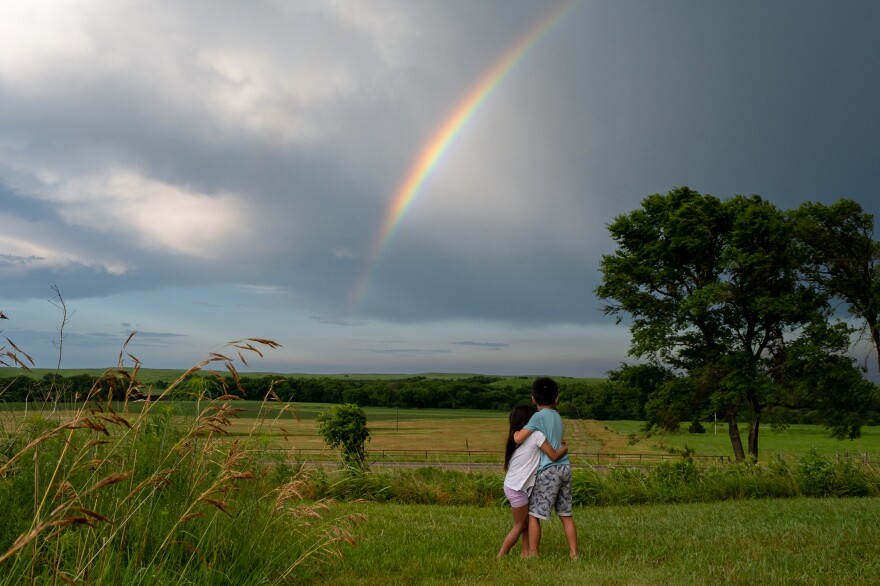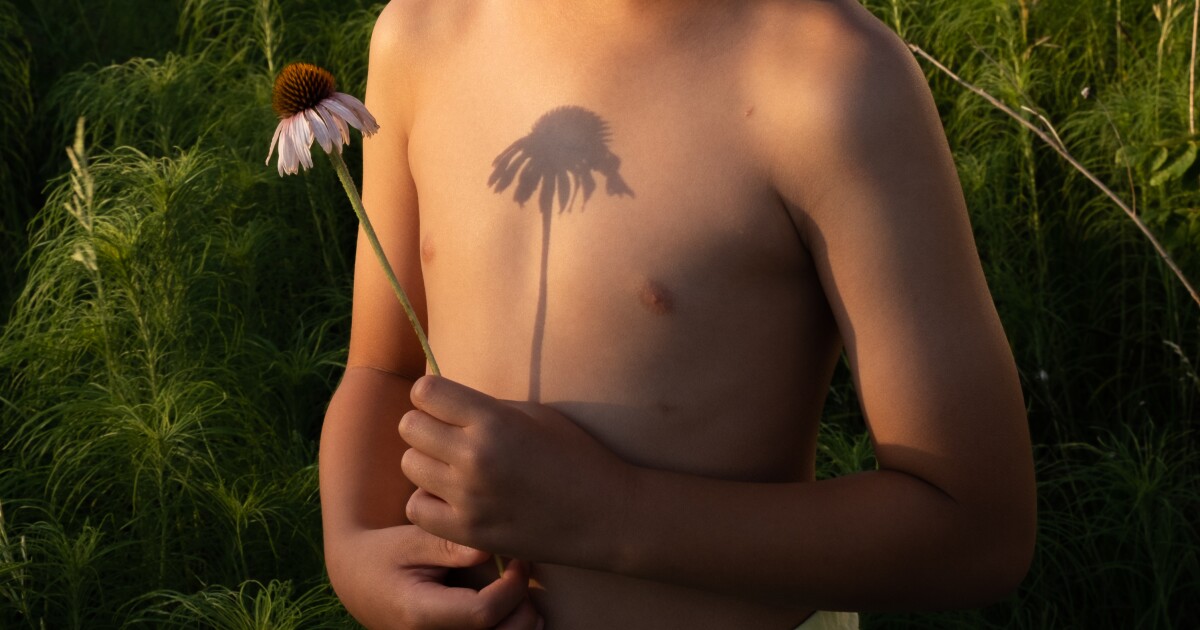[ad_1]
I arrived in this country when I was 5 and my brother was 7. The first place we visited was Disneyland. I thought we had hit the jackpot. America was even better than I had expected. Soon after, we settled in Warrensburg, Mo., and a new reality sank in. I was transported from the cityscape of Seoul to the American Midwest. I have clear memories of walking through the vast prairie and the mazes of cornfields as a child.

My mom, Young Ok Na, had a studio photo taken in preparation to come to the United States — for her passport and visa applications. My dad was going to graduate school and we had come to visit. We didn’t know that we were never going back to Korea. He didn’t want us to leave. When I made a picture of that photo, it was drizzling. A tiny fortuitous raindrop fell right under my eye. I didn’t realize until I was editing that this had happened. I ask my child self, “Why are you crying?”

I notice my kids Mila and Teo interacting with nature, playing together and seeing how they create their own worlds and make their own memories. It is when I give in to seeing the world through their eyes that I find it easiest to parent. And then sometimes, their magic seeps into my world, when I let go of trying to be in control. I project my past onto them but I know parts of them remember it too.

In Korea, there is a concept called han, which roughly translates to a collective feeling of sorrow relating to having been colonized and oppressed. It is a sentiment that connects Koreans to each other as well as to our ancestors. For members of the diaspora, han can also relate to the immigrant experience — to feelings of loss and displacement. But we can release some han in making new memories on land that feels more familiar to my children than it did to me at their age. As we walk through the tallgrass prairie, my daughter asks me, “Are we in a dream? Are we?” I wonder if she is starting to remember.

What does this land represent? I think about the house we are staying in — a casita built for Mexican rail workers a century ago, one of the last ones to survive. There are three units in the bunkhouse. From the drawing in the room, it looks like there could have been up to 10 units at one point. I had packed a Mexican dress that was gifted to my daughter, Mila, without knowing the history of the bunkhouse. I feel like it is an homage to those workers. The kids are obsessed with the wild garlic here, possibly brought here by the Mexican laborers. A part of their history continues to grow and nourish.

The more trains I watch pass behind the casitas, the more details I notice. I realize the ones carrying oil move more slowly than the ones carrying coal. My children recognize the logos on the trains moving consumer goods across the U.S. after just a few clicks on someone’s phone or computer.

I think about the Chinese rail workers who built the transcontinental railway — how they were omitted from the 1869 photo commemorating the completion of the railroad. Everyone is celebrating, opening champagne as the final golden spike is hammered into the track. How easily have our experiences, as immigrants, been erased from American history. Corky Lee recreated that photograph in 2014 with the descendants of those Chinese laborers, 145 years after the original photo was made. We can take back some of our histories in commemorating the forgotten, lost and erased. Remembering.

Through this work, I re-examine my connection to this land, reconsidering overlooked histories, as I tap into my own forgotten memories, conjuring the past, creating new memories, all while exploring my connection to the natural landscape, to my children, and to our past and future selves.
Copyright 2023 NPR. To see more, visit https://www.npr.org.

[ad_2]
